Pernille Ripp's Blog, page 22
January 19, 2019
Is School Really Safe for All?

I have been thinking a lot about belonging. About how we assume that school is seen as a safe place by all who experience it. How we assume that we are all doing enough to help these kids, these children whose lives don’t often mirror our own, these kids who someone, somewhere have made feel as if they do not belong.
I have been thinking a lot about feeling seen. About how we assume that in our schools we do enough to let every child know that we see them. That we do enough to let the adults know that they belong too. That they matter. That they are an indispensable part of our community, a community that thrives on embracing all, on love, on acceptance.
We write fancy vision statements where we tell the world that this is a safe place, one filled with opportunities for all who enter to learn, to become something more. We ask our staff to live this vision, even as they feel unsafe themselves. We have assemblies and events celebrating our accomplishments. We hand out awards and accolades. Praise and positive notes. We remind each other not to count down to the break, to the weekend, to the end of the year because for some kids home is not a safe place.
And yet, we forget that for some school isn’t safe either.
For some school is everything they fear.
For some school is only a mirror of the society who also refuses to acknowledge them as full citizens. As full human beings who deserve to be embraced, loved, accepted.
We fail at times.
Sometimes purposefully when we refuse to acknowledge that those who do not fit into our moral view of what it means to be righteous are still deserving of love. Purposefully when we suspend entire groups of children more than others. Purposefully when we enact dress codes that are only a condemnation of those whose choices we don’t agree with. Purposefully when we offer no protections for those who need it. When we let children fail at extraordinary rates because of the circumstances they face. When we continue to say that “Boys will be boys…”When we fail to stop the adults in charge from targeting each other and creating toxic work environments. When we fail to see that in our own silence, that within our own fear of rocking the boat, we are actively telling some that this, this place, is not one where they should ever let their guard down.
And sometimes we don’t even see our own failure. How when we leave certain books out of our libraries we are telling children whose stories are mirrored in those pages that their lives do not belong in our schools. That their lives are too mature, immoral, or indecent. When we tell kids to cut their hair, to change their clothing, when we display pictures of our district but they fail to show all of the people who are a part of it. When we don’t translate our news so all can read it. When we only set up events during school hours and fail to see that not everyone can change their schedule. When our texts, our videos, our learning materials fail to showcase all types of lives. When we assume that everything is a learning experience and surely those are experiencing it just need to work a little harder to find success. That we have done all we can.
And then we wonder why not every child finds success. Why educators quit. We have so much work to do.
We can do more and it starts with acknowledging those we do not see. Those whose lives are not currently valued. And I don’t mean silently valued, I mean embraced through our language, our decorations, our instructional decisions. Embraced out loud as we continually realize that there is more work to do. Making space for their voices so we can use them as a compass for how we can grow. Reflecting on our own choices and actions so we can see how we too can do more. We can ask questions through surveys and conversations and then act when people tell us that it is not safe. That they do not belong, instead of dismissing it as a fluke, only the opinion of a few. As the mother of a child who was viciously bullied, who begged us not to send her to school because it was not safe, I will tell you this, being heard is where the change begins.
The other day I overheard a child tell others about what it meant to come to our school. She said, “When I came to this school and saw the rainbow stickers, I was shook, it finally felt like I belonged.” She felt like she belonged because of a sticker. How many others do not? We assume all kids feel seen and safe at our schools, but do they really? The only way to find out is to start asking questions. Who will ask the first one?
If you are wondering where I will be in the coming year or would like to have me speak, please see this page. If you like what you read here, consider reading my book, Passionate Readers – The Art of Reaching and Engaging Every Child. This book focuses on the five keys we can implement into any reading community to strengthen student reading experiences, even within the 45 minute English block. If you are looking for solutions and ideas for how to re-engage all of your students consider reading my very first book Passionate Learners – How to Engage and Empower Your Students.
January 16, 2019
Who Wants to Read it Next?
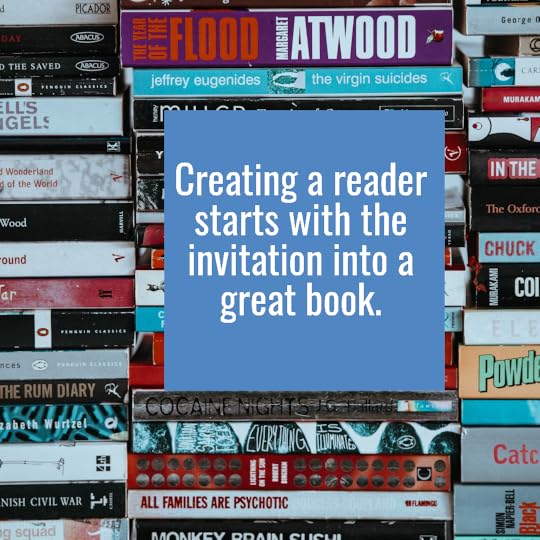
As they sit and read, every day for ten or fifteen minutes as we get ready for the day, I sit next to a student and ask them a seemingly simple question; What are you working on as a reader? As we discuss their reading life, their habits, and their goals, I always end with another question. One that seems to give many of our students’ pause, “How can we support you?” This question shouldn’t be a hard one, after all, these kids are surrounded by adults who are here to help them grow and yet for many, it takes them a moment to realize what they need, or even what they can ask for.
But one answer comes up again and again. Recommend me books. Book recommendations! Keep doing those book talks. The little talks that we do as a community almost every single day are making one of the largest differences.
I can recommend books to our students because most of the books I read are meant to be read by children. While I sometimes do stare longingly at some of my Danish crime stories that I haven’t yet read, I know that one of the biggest gifts I can give our students is a passport into the library, both the one in our classroom and the one that sits in the middle of our school. And that happens through a book talk, demystifying all of the books staring at them and making them look like journeys waiting to happen rather than insurmountable mountains.
By recommending books I have read, by other adults in the building recommending books, by students recommending books in our 30-second book talks, we are laying the foundation for a community that discusses their reading life openly. We are strengthening the notion that reading is something we all need. Something we all believe in as a way to build community. We are chipping away at the notion that some middle schoolers carry that reading is not cool or a waste of time. Instead through every recommendation, through every book held high over our heads, through every title suggested, we are laying the foundation for a readerly life. One that will hopefully expand beyond our years together, beyond this building.
And it is making a difference. Kids model the way we talk about books. Kids write down titles and then speak books to one another. Their to-be-read lists grow sometimes to delightfully impossible lengths.
So when a child reminds me once again that what they need from me is more book recommendations, it is a task I will gladly carry out. And one that I will gladly share with others. After all, they need as many books in their life as possible. They need as many book people as in their life as possible. They need as many happy reading moments as possible. And all of this can start with a simple book recommendation, a short book talk, and then another question; who wants to read it next?
To see what I am reading and recommending, follow me on Instagram
If you are wondering where I will be in the coming year or would like to have me speak, please see this page. If you like what you read here, consider reading my book, Passionate Readers – The Art of Reaching and Engaging Every Child. This book focuses on the five keys we can implement into any reading community to strengthen student reading experiences, even within the 45 minute English block. If you are looking for solutions and ideas for how to re-engage all of your students consider reading my very first book Passionate Learners – How to Engage and Empower Your Students.
January 13, 2019
Disrupting the Narrative in Small Ways
I had the chance to sit with a few of my brilliant colleagues this week to plan our upcoming units together. Count this as another reason of why I love working for Oregon School District; the chance to get a sub so that we can collaborate and actually have time together to share ideas, push our learning, and try to craft meaningful experiences.
One thing that struck me among many was the careful selection of the types of materials we were using to illustrate teaching points. As an example, in our upcoming TED talk unit, where we hope students will not only deepen their passion for something but also be able to share that passion with others, we searched for TED talks that not only illustrate the teaching point such as engaging openings or illustrating a certain type of through-line but also spoke to potential social issues that our students are aware of in different levels, meaning some live it and some are not even aware it is an issue.
This purposeful selection of the materials we use to teach something is a big attempt for us to not just teach kids the “standards” but also expand their understanding of the world around them and hopefully find something to become invested in, to disrupt the privileged narrative that many of us live in. Yes, our students need opportunities to grow as students of reading, writing, speaking, and everything else that is involved in their education, but they also need so much more than that; to become (more) aware of the issues that face us all.
And so when I think of disrupting the narrative, of increasing social awareness within the classroom, it certainly is in the large units we plan, how we treat kids, and also the educational framework we place them in. But it is also in the day-to-day, the videos we show of speakers, the read alouds we use, the mentor texts we share, the images, and the quotes we use. Whose stories are we constantly framing our learning in? Whose experiences are the dominant narrative? Are we embracing the small opportunities that naturally present themselves within our classroom to question, to push thinking, to urge students to inform themselves so that they can formulate (better educated) opinions? And more importantly, are we asking students to take on the hard work of noticing? Of questioning? Of changing the world that they function in? Are we giving them the opportunity to explore the perimeters they work within in order to question that very same framework?
When we plan our lessons, we have so many opportunities to make the work bigger than the learning target we are trying to reach. We need to be aware though of our choices and then push ourselves to expand those choices. Whose stories are we upholding? Whose stories are forgotten?
PS: I wrote about the text selections disruption process we use more purposefully here.
If you are wondering where I will be in the coming year or would like to have me speak, please see this page. If you like what you read here, consider reading my book, Passionate Readers – The Art of Reaching and Engaging Every Child. This book focuses on the five keys we can implement into any reading community to strengthen student reading experiences, even within the 45 minute English block. If you are looking for solutions and ideas for how to re-engage all of your students consider reading my very first book Passionate Learners – How to Engage and Empower Your Students.
January 7, 2019
Helping Students Set Better Reading Goals

An often asked question I receive is, “How do you help kids set a reading goal?” And while the answer really could be an entire book, I promised the Passionate Readers Facebook group that I would write a little bit about my process here. After all, perhaps something I am doing as I try to figure this out myself can help someone else, or perhaps, and this is often the case, somebody else has great ideas that they can share in the comments.
In the past, I used to set the reading goals for all of my students, after all, as the adult in the room I thought it was part of my job to set attainable goals for all students in order for them to read more, comprehend more, be more. And yet, whenever I sat with a student and we discussed these goals that I had pre-determined based on what I saw as their needs, unsurprisingly there wasn’t always full buy-in. Sure, some kids were onboard and appreciated the goals, some even took them to heart and really worked on them, but some also (sometimes many) forgot everything about the goal the minute our conversation ended. This then began a chain of reminders, notes, and post-its for their notebooks as I tried to somehow get them all to not just remember their goals but actually invest in them. Perhaps you have been in this situation as well?
It took me a few years to realize that part of the reason these goals failed was that they had little student input. The goals were, mostly, determined by me, and while many of them were sound and based on best practice within reading instruction, they offered students little chance for ownership or engagement with the goal. This meant there was no skin in the game for our students and the goals were easy to dismiss. There was also a distinct lack of conversation surrounding the goal, sure, we conferred, but it often followed a “script” in a way and didn’t allow for a lot of natural conversation to occur. While I liked having a format as a newer teacher, it stopped me at times from really listening and reacting to what they were saying.
Realizing these two things was a huge step and yet it still didn’t solve my problem; how do we create goals that students may actually want to invest in? Well for me the answer was student reading identity. Not the goal itself, but instead students (re)discovering who they are as a reader because without any kind of realization of this, they won’t do well setting goals.
Knowing this, we start every year with a survey, a reflection, and a discussion of who they are as a reader. The survey changes every year, as it should, but it still creates the foundation of our very first discussion the first time we meet. It allows me a small peek into how they view themselves as readers as we get to know each other. And so the very first goal is typically many-pronged. Many of our students need to increase their reading and so for many that is part of their goal, and yet, that in itself is not a great goal for many. There are many of our students who should be reading more but they have habits that need to be changed first before they can even accomplish that goal. Our conversation may then center around the following items:
Desire – to increase reading stamina, success, and better relationship with books.
Barriers – Doesn’t know how to select a great book, doesn’t take books home, doesn’t have “book people,” and doesn’t actually read outside of class, in fact, some days doesn’t even read in class.
Old goal: I would have asked the student to increase their reading outside of school without realizing which and how many barriers they may be facing.
Potential new goal: Figure out which books they like to read. OR add more titles to their to-be-read list. OR…. (this is where the conversation comes into play – what makes sense for them in order to challenge themselves as readers?)
Questions I (may) use when discussing whether a goal make sense:
Is this a goal that will actually work for you?How will this goal challenge you?What barriers are in place for you to reach this goal?Which habits do you need to change in order to reach this goal?What is your next step toward this goal?How can I support you in reaching this goal/What would you like me to do?
The thing is, we need to give students more opportunities to discuss what they know about themselves as learners. And when some students inevitably tell us that they don’t know who they are as readers then that is where we start our conversations. We become detectives trying to help them recognize and then further their own reading identity, this then leads to them discussing and then choosing potential goals, even if for some it is a reluctant goal. The one they set for themselves is recorded and then discussed whenever we meet. This goal may be a goal that some of our students work on all year and while this may seem disheartening, I don’t think it is, in a way it makes sense; after all students sometimes have well-established habits that can take years of great experiences to undo – don’t we all?
What I have learned in goal-setting with students is simple yet has once again transformed how I treat our year together. Conversation and uncovering/rediscovering their reading identity and then basing everything on that is what will fuel our goal setting. The students have taught me that everyone needs a unique goal. That the best goals start with reflection, conversation, and then are set. That goals only mean something if students are part of the conversation. That goals can change. That we should not set the goal for them if we can help it because this transfers the ownership. (Note: I have goals I set for kids privately but that is to inform my teaching and not part of our conversation.) That goals need to mean something.
So as I sit with kids every day discussing what they are working on as readers, I am always amazed at the conversations we have. On how they reflect on themselves and what they need to do. On how more are realizing why this goal setting is actually worth their time. On how proud they are for reaching goals that matter to them. And while I am proud of all of our readers, I cannot help but smile the widest when a child discovers just how much they have grown. Not because a test told them so but because they realized it by thinking about themselves and their progress. Isn’t that how it always should be?
If you like what you read here, consider reading my book, Passionate Readers – The Art of Reaching and Engaging Every Child. This book focuses on the five keys we can implement into any reading community to strengthen student reading experiences, even within the 45 minute English block. If you are looking for solutions and ideas for how to re-engage all of your students consider reading my very first book Passionate Learners – How to Engage and Empower Your Students. Also, if you are wondering where I will be in the coming year or would like to have me speak, please see this page.
January 3, 2019
On Book Quantity and the Damage It Can (Sometimes) Do
[image error]
Today our students did a midyear reading goal reflection, a quick check to see whether or not their reading goal for the year should change. A quick check for them to take the pulse of their own reading life. It is always interesting to listen in as kids discover that they are either reading a lot more than they thought or need to step it up a bit to make their challenge goal of reading at least 25 books in 7th grade. For some 25 books is not a big deal, for others it is a mountain that they are steadily climbing, slowly putting one foot in front of the other as they find yet another book to hook them to a readerly life. They know there is no punishment for not meeting their goal. They know it is meant as a motivator for them to increase their reading. It has taken several years and different iterations for us to reach a reading challenge that seems to be successful for nearly all. And today, was a day to check in on that challenge.
As I meander by the students, a girl asks me how I am doing with my reading goal; 105 books? They like to check in now and then to see if I am staying on track, even if it is just to marvel at the goal itself. 105 books?! Who in the world can read that many books? She is trying to keep up with me but she is only at 30. I quickly tell her that one of the things I am also working on is slowing down when I read and yet the look she offers me tells me of her disbelief. After all, if my goal is to slow down then how come I am trying to read so many books?
Today, that look really hit me. I usually shrug it off, it is not the first time a student stares at me in disbelief, but today amidst the slowness of the day it gave me pause. Why is my goal so high? Why am I trying to read so many books? I don’t need to impress anyone. I am not in competition with anyone. Sure I love to recommend books but I am not the only one capable of doing so. What started as 80 books a year five years ago only keeps growing and to what end? Why the need for the high number, when 70 or even 50 would suffice?
And so I sit tonight realizing the danger of my own reading goal. Of setting it as a quantity one rather than one that calls for me to challenge myself. With this goal of 105 chapter books for the school year, I am falling into the same old habits as our students do when we focus on speed versus quality; picking shorter books, skimming texts, forcing myself to read even though my heart is not in it. With the increase in quantity comes a seemingly decrease in enjoyment. Reading is now a task in order to reach my goal, rather than something I do to relax. My to-be-read bookshelf is now work waiting for me to complete rather than adventures beckoning me to join them.
I see this happen with students too who for some reason believe that high quantities of books mean that they are automatically stronger readers. Now, don’t get me wrong, research, of course, shows the positive correlation between reading large quantities of texts and being a better reader, but at what point does it become detrimental rather than good? At what point does the hurried race after too high of a goal encourage students to skim read, to skip pages, to develop poor reading habits rather than lose themselves in the experience? Instead of setting a goal that challenges them in a new way?
There is a balance, of course, that sometimes gets lost in the school shuffle where kids’ reading lives are made into contests through public book challenge displays, leaderboards, and reading scores. Where it often matters more how much you read versus what you read. Where students are celebrated for reading quickly, even if they didn’t fully get the chance to actually appreciate what they read. Yes, quantity, and increasing quantity and access to great reading material matters for all of us, but so does slowing down, savoring text, and actually enjoying the experience. This is how we help students become or remain the types of people who cannot wait to read for fun.
So today as the students did their midyear goals, I changed my own. I don’t want to read 105 books this year. I want to read 80. 80 amazing books that I cannot wait to finish. 80 books that I cannot wait to share. 80 books that allow me to fall back in love with reading and see it for the great gift it is, not for the job it has become. And who knows, perhaps I will read more, but I am allowing myself to slow down. To sit with the books. And I cannot wait.
PS: It is not too late to join the winter book club study for Passionate Readers – it starts this Sunday. Come join the conversation with hundreds of other educators as we try to create reading experiences for all of the kids we have. Also, I am currently planning my summer speaking schedule, see this page for more information if you would like me to help reach your vision for creating a school experience where students are empowered and engaged.
December 31, 2018
A Word to End the Year
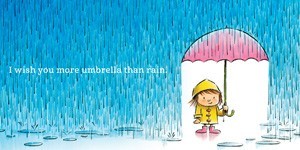 Image from I Wish You More by Amy Krouse Rosenthal
Image from I Wish You More by Amy Krouse Rosenthal The house is clean, my exercise goal met, lagkagen stands at the ready – Happy birthday, sweet Theadora – and as 2018 runs slowly out, I think of the year to come. A year where I will turn 39. A year where Augustine will enter kindergarten. Where we will travel as far away as Taiwan to teach and learn. Where perhaps another book will be written. A year that beckons for a word to describe it. And so like in the past, I choose a word to help me focus as the year opens up and daily life returns.
More.
More love, even when it is snuck in small moments and through small gestures.
More relaxation. Augi already asks me if we will go to the pool every day this summer.
More moments to sit quietly.
More moments to feel good.
More “I love you’s” and ” I like you’s.”
More thank you’s.
More laughs.
More books.
More sleep.
More walks.
And even more vegetables.
More opportunities to say yes to and if no is said it is because it stood in the way of another more.
But also knowing that more does not mean all. That more does not mean unlimited. That more does not mean sacrificing my family to be more for others. But the type of more that comes with paying attention. With care. With a positive outlook that allows us to look back and realize that we already have so much and that what we really need to do is to realize it.
To give more when it matters. To know when to say no, more. To know when others should have the chance to be more, to be an ally more.
More for the good of others.
And so I wish you more, to quote the incredible Amy Krouse Rosenthal. More of what you need, not what you don’t.
Thank you for giving me more.
December 28, 2018
My Favorite Books of 2018
Another fantastic year of reading and yet I know there are so many books I have probably missed on this list. In the hundreds of books I got to experience this year, these are the ones that stood out. These are the ones that I hope others get to experience. While many were published in 2018, some were not and I am so glad I finally got to read them.
Picture Books Fiction
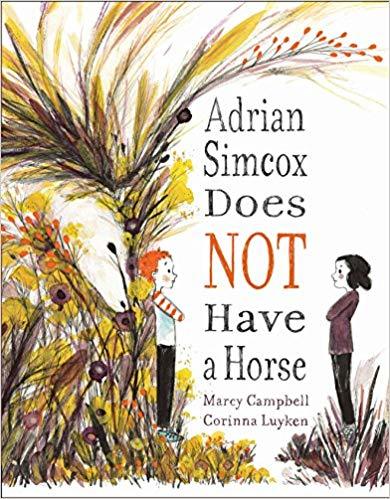
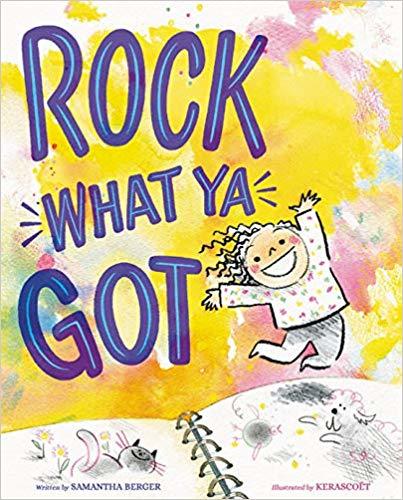

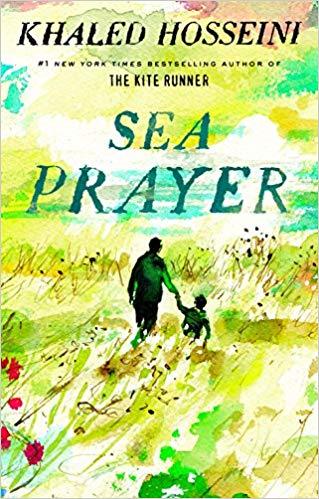
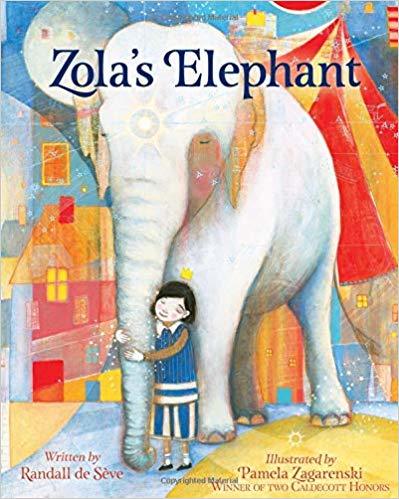

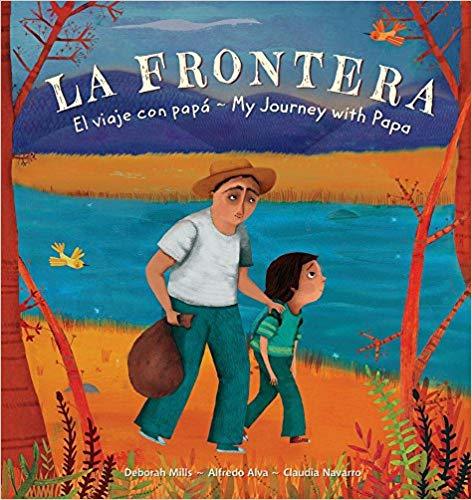


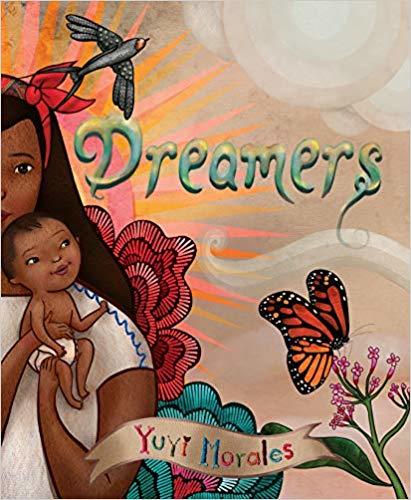
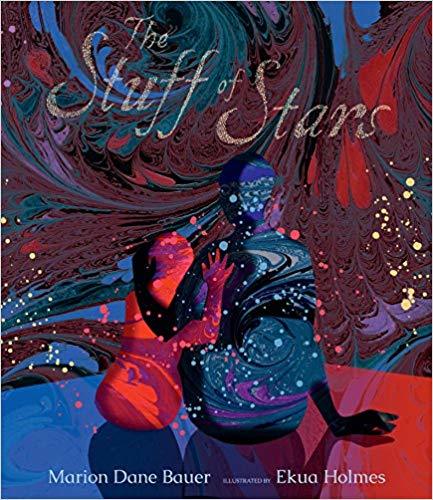
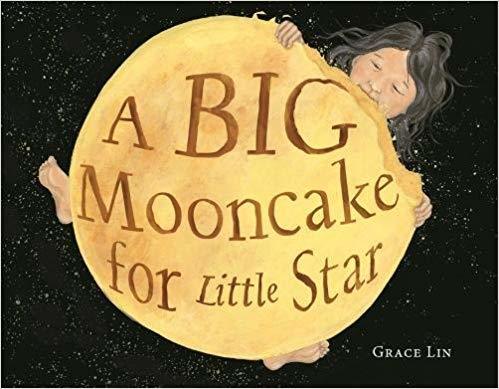
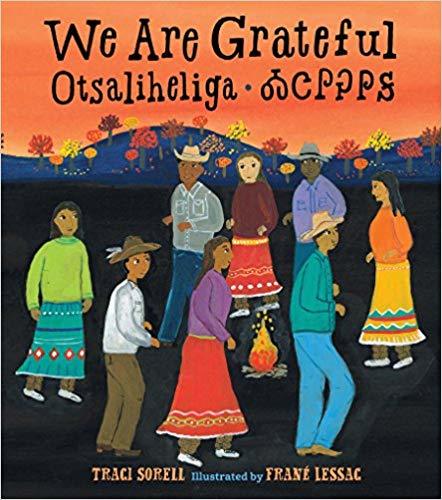
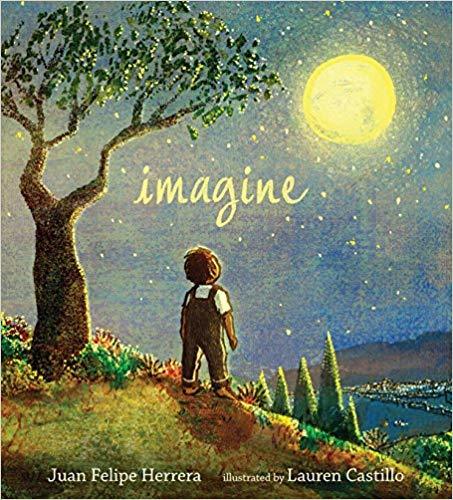

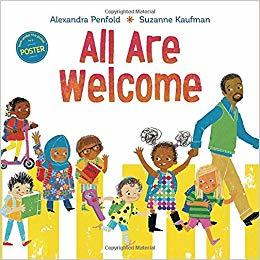
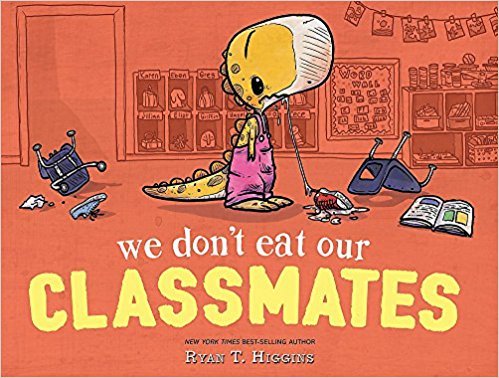
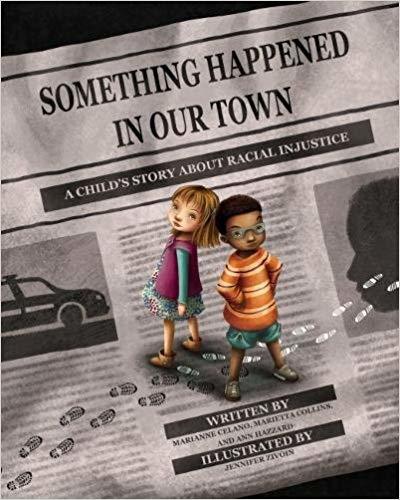
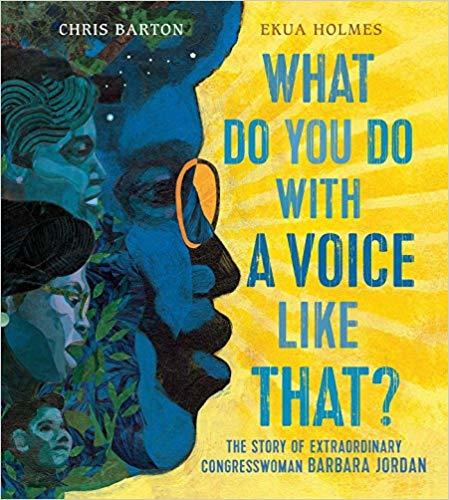
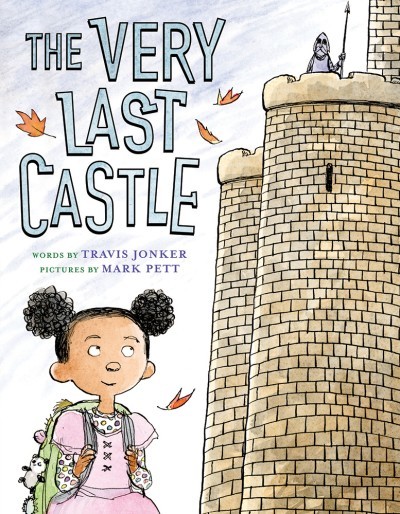
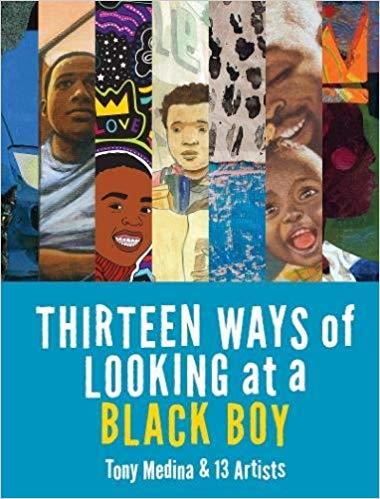
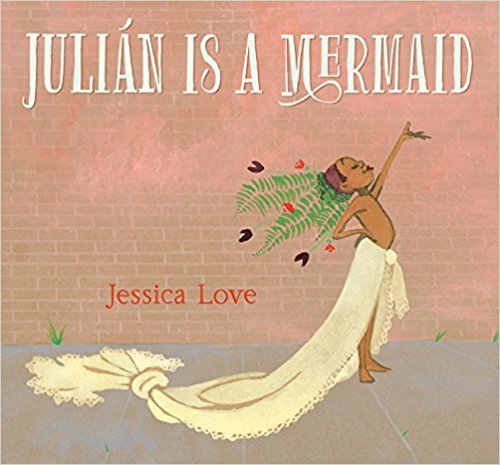
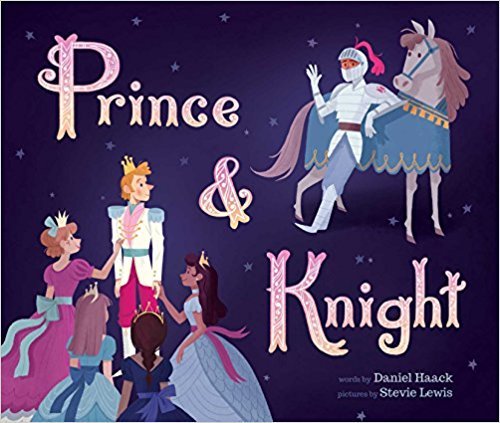
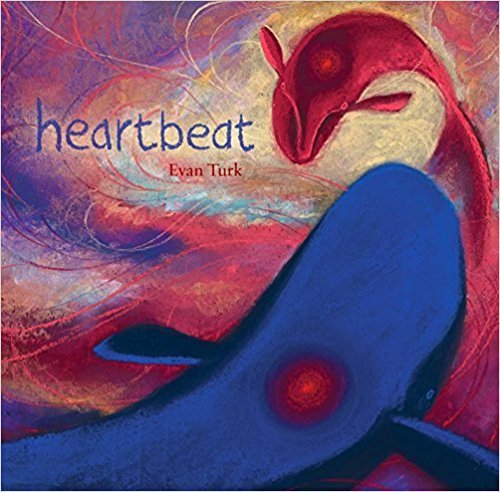
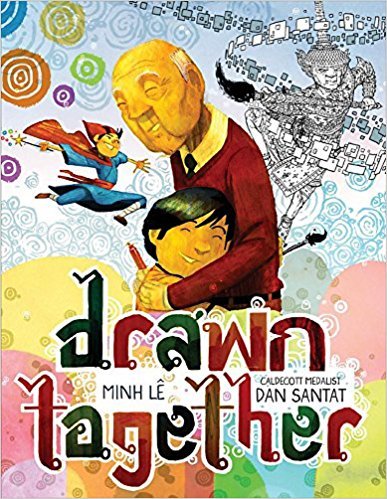
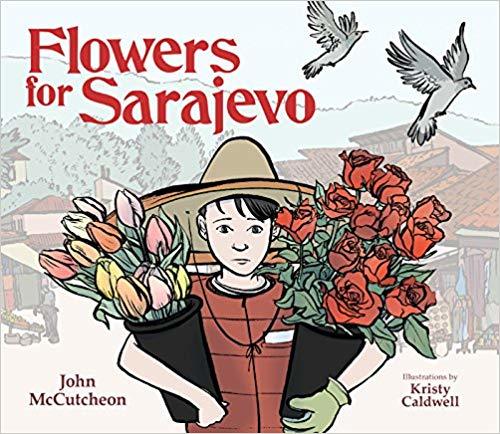
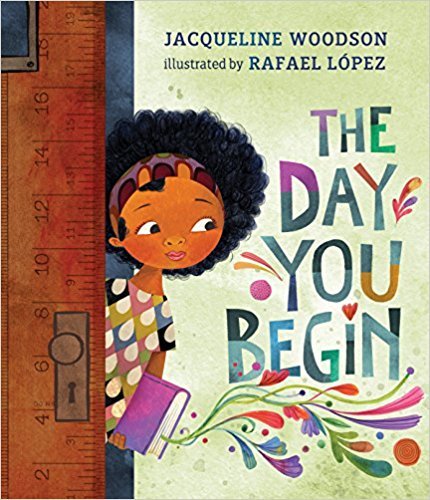
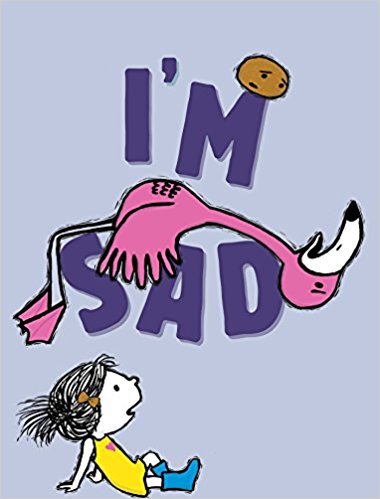

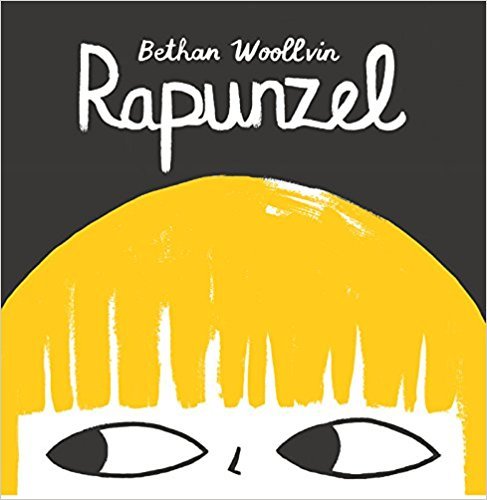
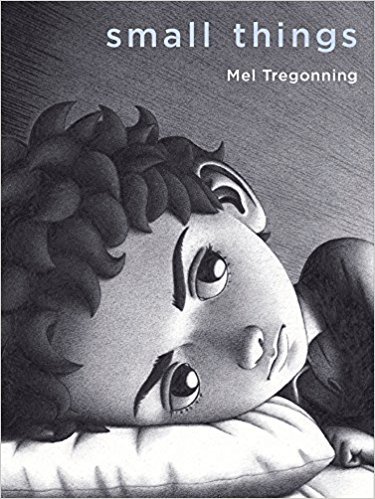
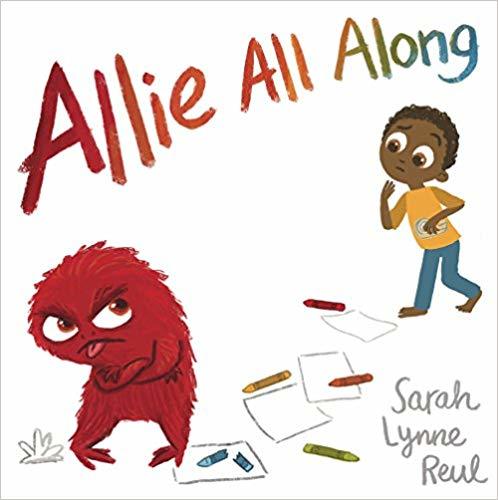

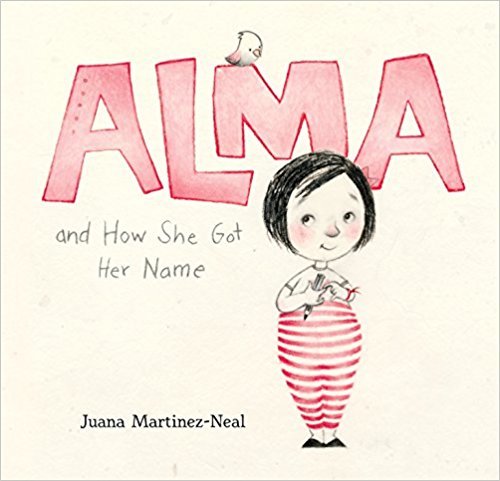

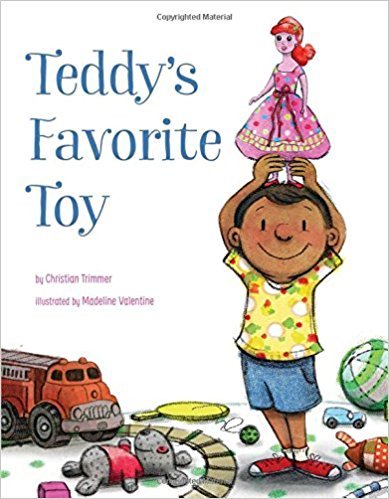

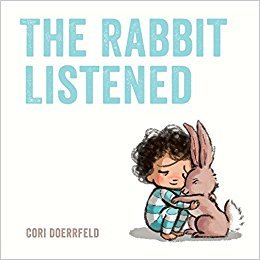

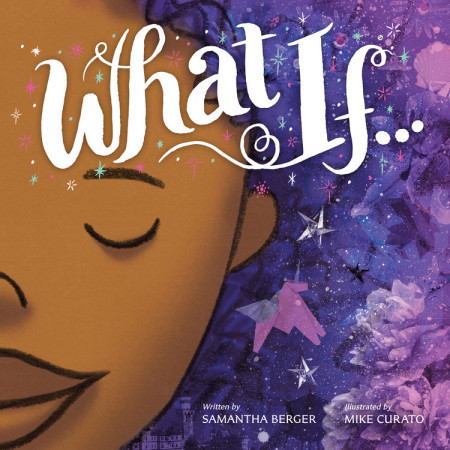
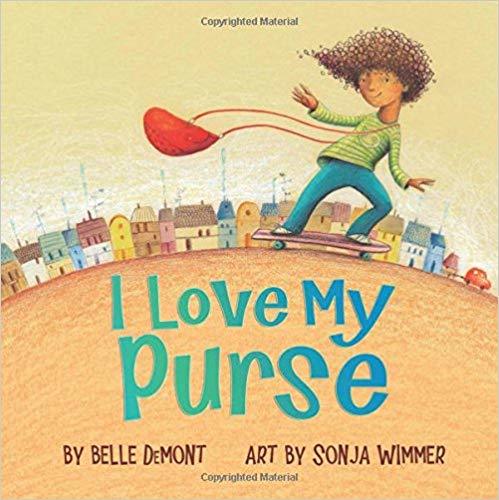
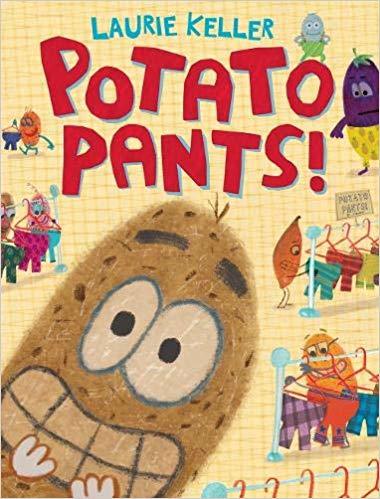
Picture Book Non-Fiction
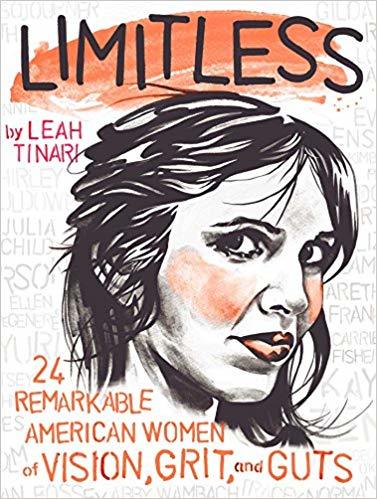
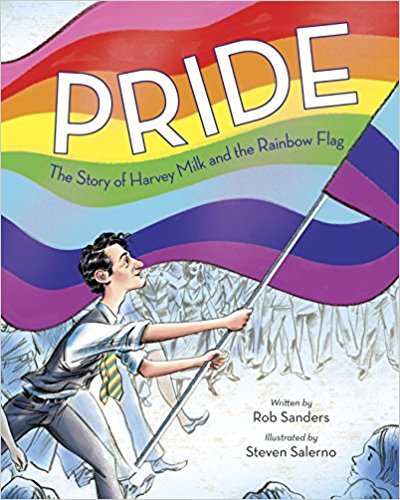
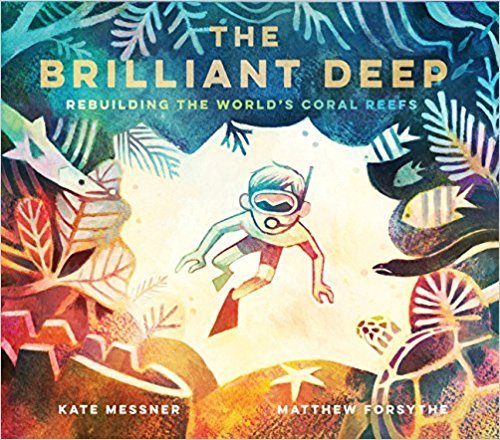

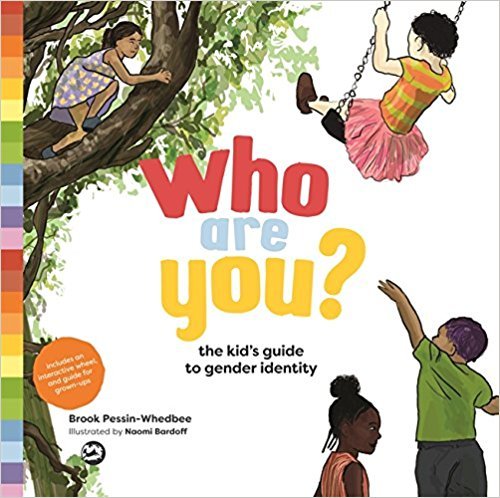
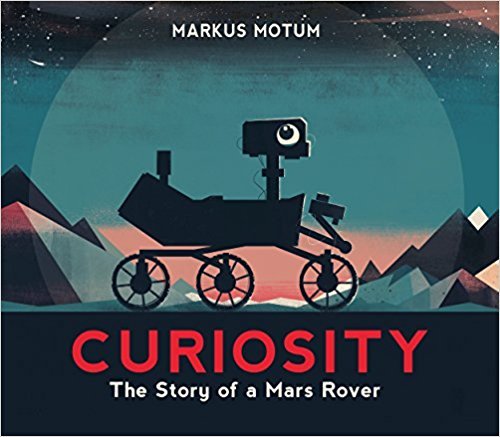
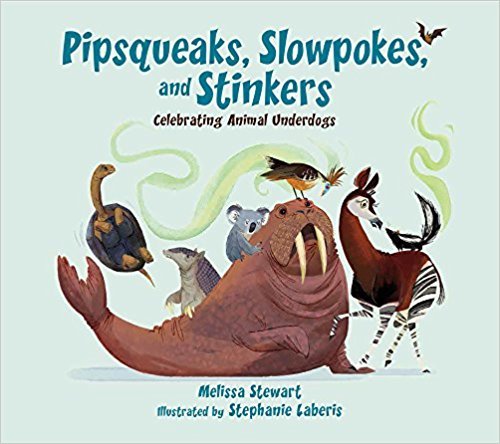
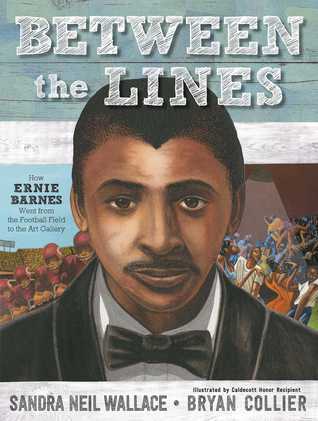
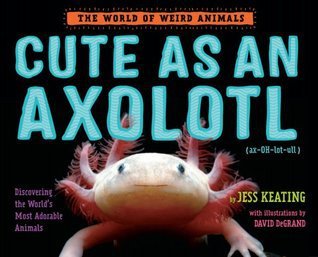
Chapter Books – Middle Grade or Younger
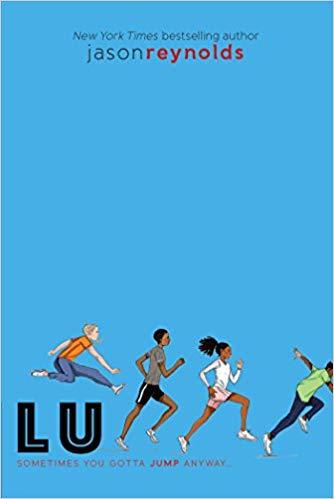

Wicked Nix by Lena Coakley and illustrated by Jaime Zollars
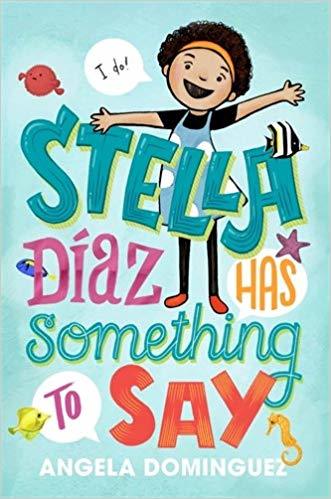
Stella Diaz Has Something to Say by Angela Dominguez
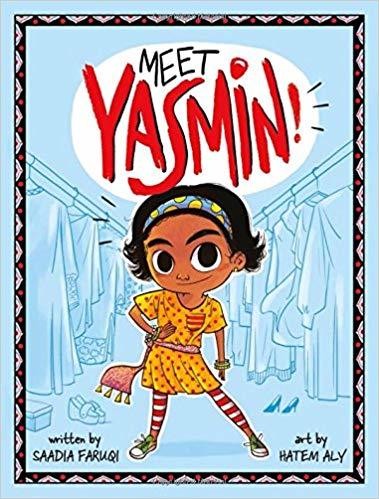
Meet Yasmin! by Saadia Faruqi (Author), Hatem Aly (Illustrator)
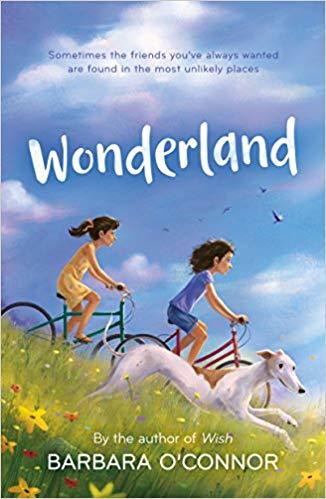
Wonderland by Barbara O’Connor (Author)
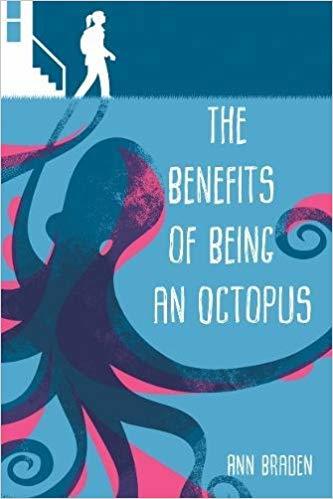
The Benefits of Being an Octopus by Ann Braden (Author)
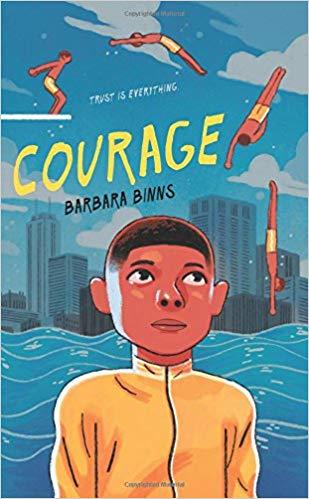
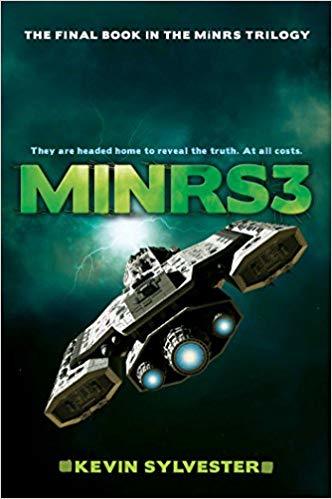
Minrs 3 by Kevin Sylvester (Final book of the Minrs trilogy)
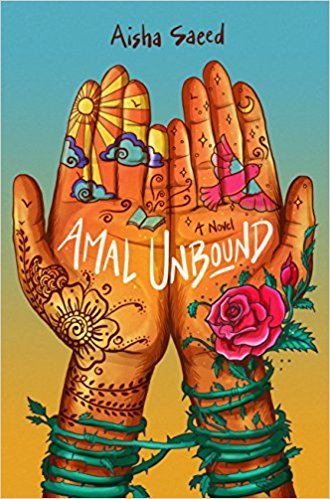
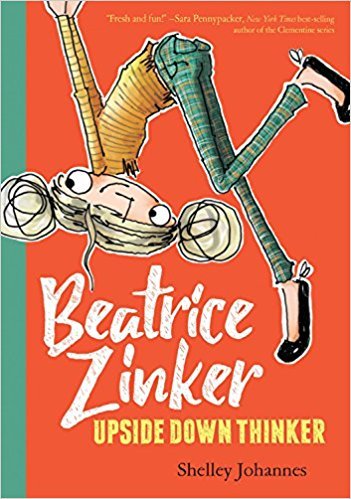
Beatrice Zinker, Upside Down Thinker by Shelley Johannes

Ghost Boys by Jewell Parker Rhodes
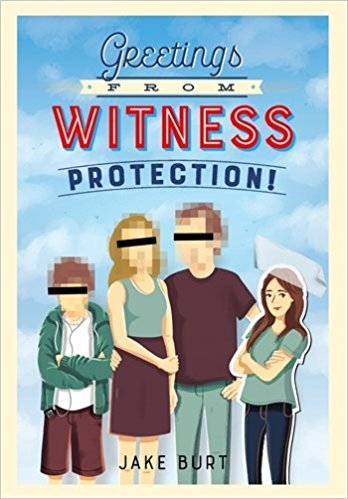
Greetings from Witness Protection by Jake Burt
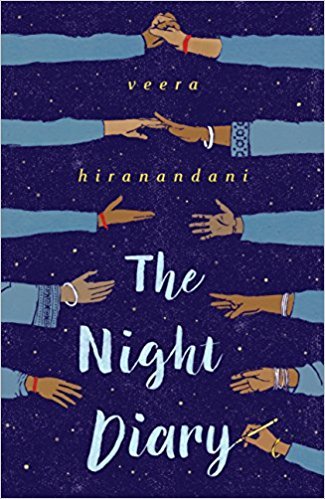
The Night Diary by Veera Hiranandani
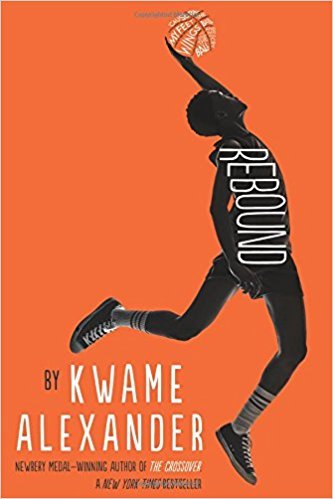
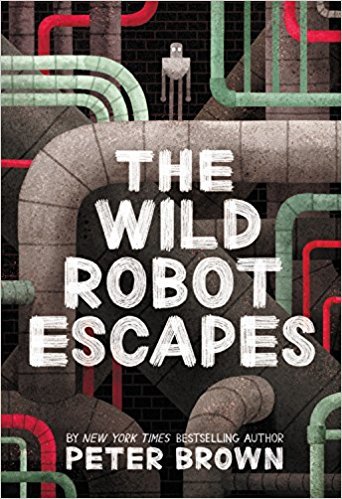
The Wild Robot Escapes by Peter Brown

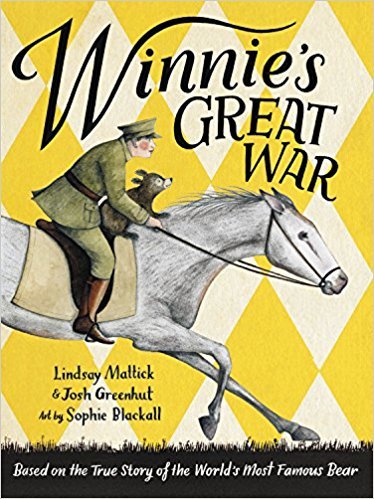
Winnie’s Great War by Lindsay Mattick and Josh Greenhut, art by Sophie Blackall
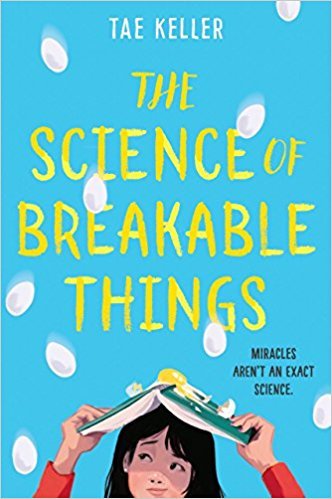
The Science of Breakable Things by Tae Keller
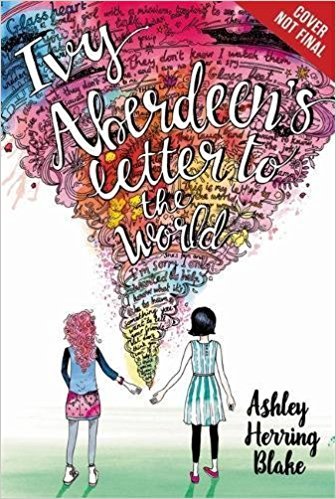
Ivy Aberdeen’s Letter to the World by Ashley Herring Blake
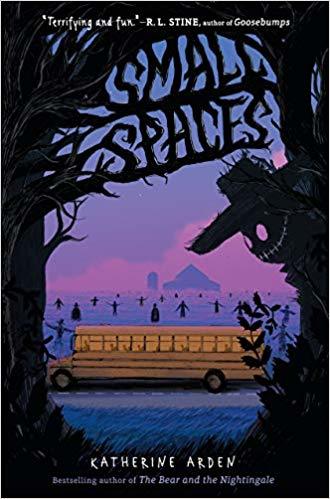
Small Spaces by Catherine Arden
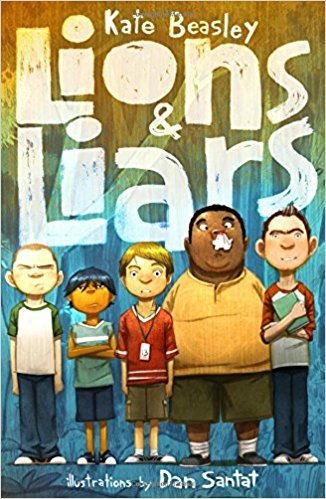
Lions and Liars by Kate Beasley
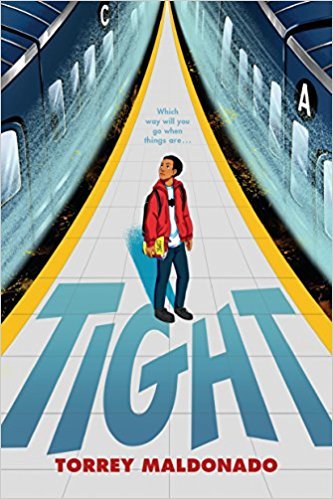
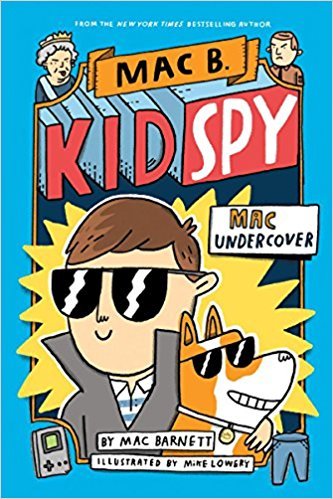
Mac B. Kid Spy by Mac Barnett illustrated by Mike Lowery
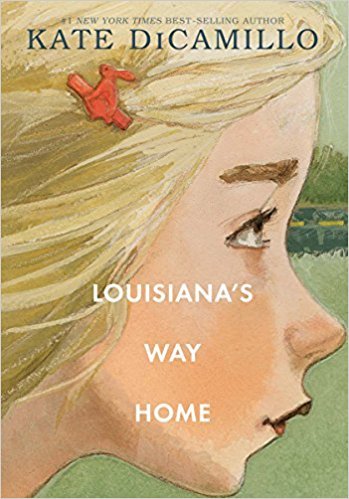
Louisiana’s Way Home by Kate DiCamillo
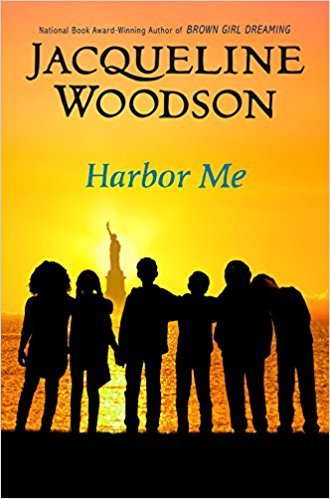
Harbor Me by Jacqueline Woodson
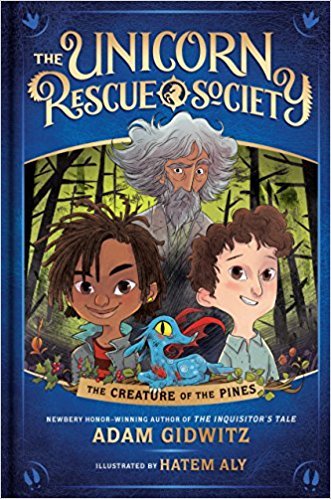
The Unicorn Rescue Society by Adam Gidwitz, illustrated by Hatem Aly
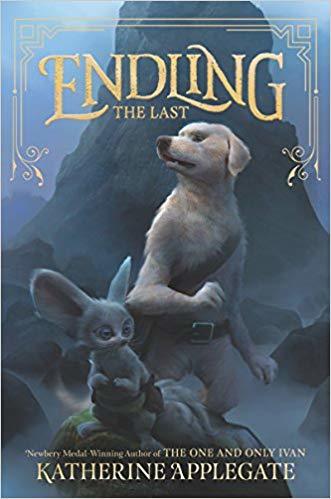
The Endling by Katherine Applegate
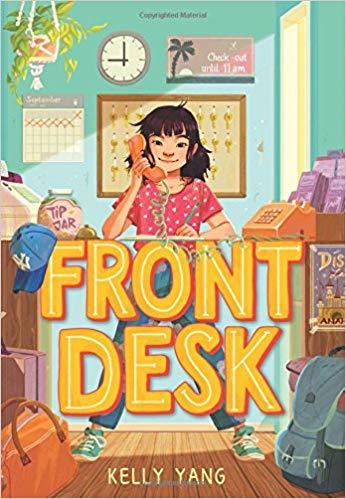
Graphic Novels
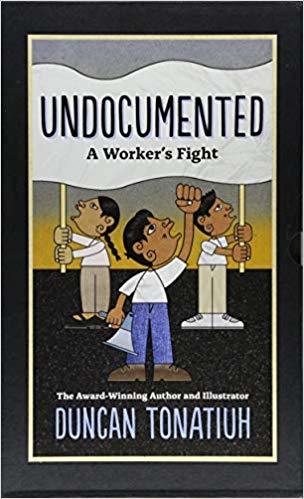
Undocumented – A Worker’s Fight by Duncan Tonatiuh

7 Generations – A Plains Cree Saga by David Alexander Robertson and drawn by Scott A. Henderson
![Ms. Marvel Vol. 1: No Normal (Ms. Marvel Series) by [Wilson, G.]](https://i.gr-assets.com/images/S/compressed.photo.goodreads.com/hostedimages/1546091698i/26828130.jpg)
Ms. Marvel by G. Wilson and drawn by Adrian Alphona
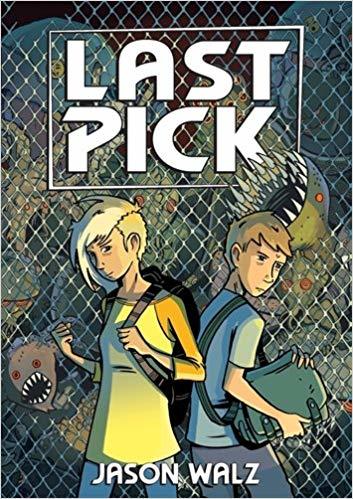
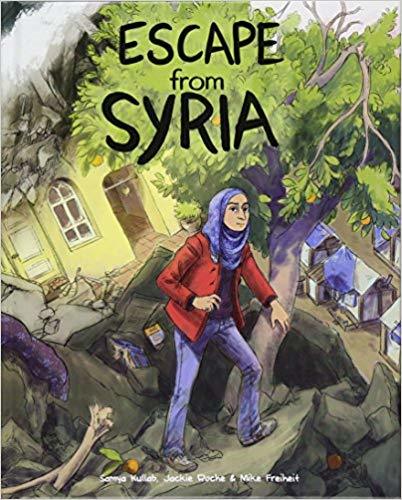
Escape from Syria by Samya Kullab and Jackie Roche
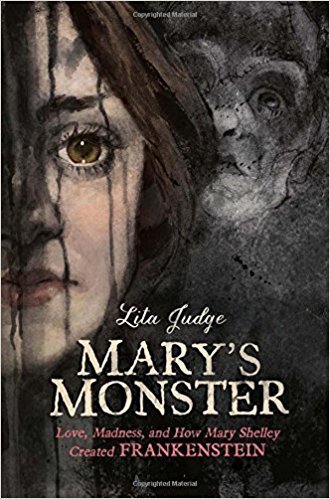
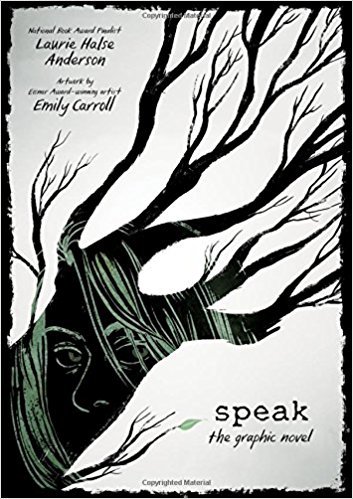
Speak – The Graphic Novel by Laurie Halse Anderson
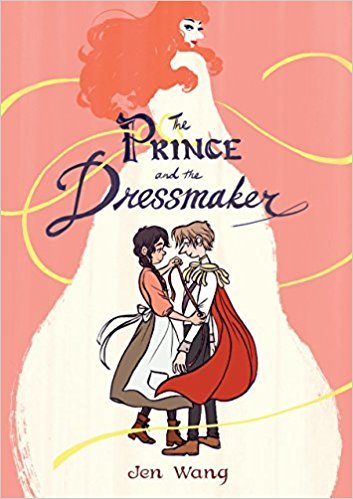
The Prince and the Dressmaker by Jen Wang
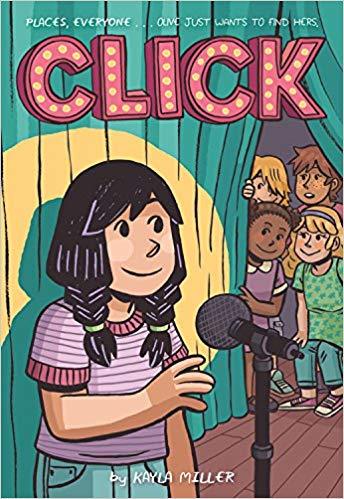

All Summer Long by Hope Larson

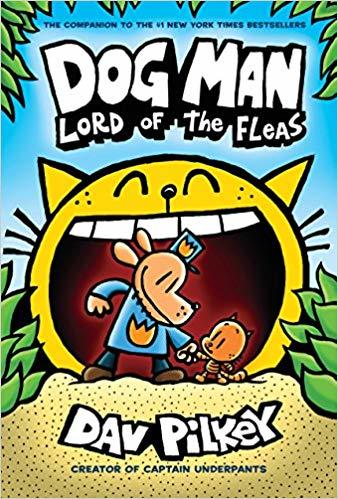
Dog Man: Lord of the Fleas by Dav Pilkey
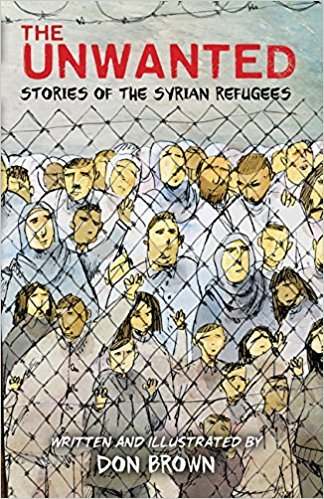
The Unwanted: Stories of the Syrian Refugees
Chapter Books – Young Adult
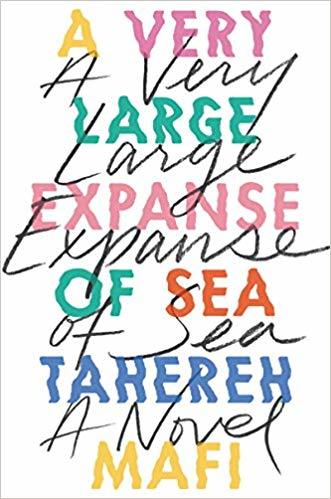
A Very Large Expanse of Sea by Tahereh Mafi


Internment by Samira Ahmed – won’t release until March 2019 – must pre-order

Dry by Jarrod Shusterman and Neal Shusterman

The Skin I’m In by Sharon Flake

Darius the Great Is Not Okay by Adib Khorram (Author)

The Marrow Thieves by Cherie Dimaline

Dread Nation by Justina Ireland
[image error]
One of Us is Lying by Karen McManus

Love, Hate, and Other Filters by Samira Ahmed

Girl Made of Stars by Ashley Herring Blake

You Bring the Distant Near by Mitali Perkins

The Poet X by Elizabeth Acevedo

Children of Blood and Bone by Tomi Adeyemi

The Wicked Deep by Shea Ernshaw

Stalking Jack the Ripper by Kerri Maniscalco




Give Me Some Truth by Eric Gansworth

Tyler Johnson Was Here by Jay Coles

#Murdertrending by Gretchen McNeil Trail of Lightning by Rebecca Roanhorse

What If It’s Us by Becky Albertalli and Adam Silvera
Non-Fiction

(Don’t )Call Me Crazy – 33 Voices Start the Conversation about Mental Health edited by Kelly Jensen

Fault Lines in the Constitution by Cynthia Levinson & Sanford Levinson

Unpresidented by Martha Brockenbrough

We Rise, We Resist, We Raise our Voices edited by Wade Hudson & Cheryl Willis Hudson

First Generation by Sandra Neil Wallace and Rich Wallace, illustrated by Agata Nowicka

Dog Days of History by Sarah Albee


Hey, Kiddo by Jarrett J. Krosoczka

Two Truths and a Lie – Histories and Mysteries by Ammi-Joan Paquette and Laurie Ann Thompson
Which books did you love in 2018?
December 26, 2018
Parents: Creating Joyful Reading Routines at Home
We sit together with a book between us carefully piecing the words together. Sometimes they come haltingly. Sometimes they flow. Learning to read is hard work, but loving to read is not, not right now, not for most of our kids. We are a household of readers, all on a separate journey. All growing, exploring and learning, some more quickly than others. I am one of several bookworms in our household with books wherever we go, with a to-be-read pile bigger than we have hours in the day. We are a household of readers, and yet, even for us, in the hustle and bustle of the holidays, we haven’t done much reading lately. Not planned anyway, I know we cannot be alone.
So how do we keep reading front and center, even when life gets really busy? How do we try to create joyful reading experiences at home? It turns out, that many of the same things we do in our classrooms to create passionate readers also work at home.
Flood your home with books if possible. To be readers we need things to read. There has been a lot of research on the harmful effects of students living in book deserts and what the unintended consequences are when kids don’t have access to books. This is why book ownership is so important, kids who own books are 15 times more likely to read above the level they are expected to be at according to the National Literacy Trust. And more importantly, it sets the tone; reading is valued at home, reading is something we believe in by spending our money or procuring reading material somehow. However, this is also an equity issue, it is easy for someone to say; buy books for your kids, but if you don’t have disposable income, then that can become a challenge. Yet, finding books and other reading material for kids to have where they live is vital in creating readers. So if you have the money; buy books and other reading materials. If you do not, reach out to your child’s school, visit a little free library if possible, visit a public library if possible, or get connected with a book charity. Here in Madison, we have the Madison Reading Project whose mission is to get books in the hands of kids – what do you have where you live? (A great book to read on book access and how it helps students become readers is the book Game Changer – Book Access for All Kids by Donalyn Miller and Colby Sharp).
Leave reading materials everywhere. We have books everywhere at our house, which is a privilege in itself. Books are in our kitchen, bathroom, living rooms, cars, and, of course, bedrooms. But not just books, magazines, newspapers and other fun things to read. Lately, we have been loving MAD magazine which I grew up on in Denmark. Our kids gravitate toward the books, picture books and everything else because they are visible. So if you can leave books wherever your kids are: the car, the bathroom, the living room, their rooms. If you do not have access to a lot of books ask their school for help, scour garage sales, or visit the library if possible.
Sneak in more reading. Because we remind our kids to bring books in the car, to family gatherings, to appointments, grocery shopping, and yes, even sometimes to lunch, we sneak in a lot of reading. Our kids don’t sit on iPads or phones on a regular basis, they sit with books. In fact, this has been one of aha moments, every time we pull out our phone to check Reddit (#ThereWasAnAttempt) or other social media, we could be pulling out a book. I am often asked how I read so much in a year, this is one of the ways. While we love sitting down for long chunks of time to read, there is a lot of value in the minutes that can be snuck in, and those minutes add up.
Create a reading routine. One of the biggest things I discuss with those at home is to find a routine for reading and not leaving it to chance. Is it that everybody reads before getting out of bed? Is it the last thing that happens at the end of the day? Find a time, space, and then make it an expectation. We have the kids read after school with us when I get home, on the weekends we have them read before TV. This isn’t because it is a punishment but because it shows importance. Create a drop-everything-and-read time and then abide by your own decisions and join in with your own books, because we know that children who see adults read, read more themselves, thanks Stephen Krashen.
Read yourself. This is an often missed step where we, adults, claim that we do not have time to read. I cannot tell you how many parents have sheepishly admitted that they do not read themselves and then wonder how they can best help their own kids become readers. My advice always; read with your kids. Go on your own quest to find incredible books. Abandon books that don’t work. Set yourself up to have incredible reading experiences just like you would hope your kid(s) would. Be a reading role model because kids need to see what real adult reading looks like. Read in front of them. While Brandon, my husband, has been a slow convert to reading for pleasure, he has been very deliberate in sharing his reading journey with our kids. I think it is incredibly powerful for kids to see their parents or caregivers start to embrace reading for pleasure finally as adults.
Visit places where books are present. Build visits into the library, bookstores or even friends’ houses where there are books visible into your reading lives. Seeing books within reach often entices reading and there is something about the promise of a brand-new crisp book that cannot help but be exciting. And browse online as well. What are people sharing on the #BookADay thread? Which books are being shared on Instagram under hashtags like the one I use (#pernillerecommends)?
Build excitement through book shopping. Go book shopping with your kids at your local bookstore, browse the displays at the library, look up the bestseller lists to see what is hot in literature right now, order from the book catalog that comes home (i get as excited as the kids). Countdown the days together for that sequel or an amazing new book to be released, order it if you can or go to the bookstore on its release date. Build excitement for the act of reading together much like you would the release of a movie. If you need ideas for release dates, see Mr. Schu’s calendar of book releases.
Have your own to-be-read list. I get super excited when new books show up or when we go to a bookstore together and my kids know that my to-be-read pile (or bookshelf because let’s be honest here…) is a neverending quest of great reading experiences waiting to happen. They see how big it gets, they see how I have piles in different places, I discuss how I pick a book at times if it comes up and I encourage them to have their own. What will they be reading next?
Embrace audiobooks. We do a lot of driving as I travel to speak and as we visit others, so audiobooks from the local library are a constant companion. The kids select the text or we do when we know a book may be a great discussion for our family. This is also a great way to start conversations about social justice topics, such as when we listened to George by Alex Gino and we discussed gender identity, yes, even with our youngest. Overall, audiobooks cut down on our kids arguing, creates conversation, and become a part of our reading memories.
Embrace real choice. So your child wants to read the same book all the time? Ok. So your child wants to read super “easy” books all the time? Ok. So your child wants to read only one type of book all the time? Ok. Reading at home is for great reading experiences, for having fun with your reading, for keeping the joy of reading alive. We can recommend, we can purchase, we can entice, but I would never force certain texts on kids. I have seen too many kids stop their reading or fake it because of forced choice, usually through the eagerness of parents to share their favorite classic texts with their kids. While I love the sentiment of that, I am not always sure it is done well and can end up doing more harm than good. Perhaps, our focus instead should be to discover new classics instead such as The Poet X by Elizabeth Acevedo or The One and Only Ivan by Katherine Applegate.
Be invested and interested. Ask genuine questions about their reading experiences. Share your own. Embrace your reading slumps together and do something about them together. Ask questions about what they plan on reading, whether they like the book or not, or what made them pick that book. Keep it light but keep it constant.
Keep it joyful. When kids come home from school, they are often tired and ready to do everything but read. I get it, after being at a conference all day or even teaching, reading is pretty far from my mind as well. We often lose readers at home because we see it as one more thing to do, rather than an experience waiting to happen. So keep it light, keep it fun. Don’t assign journal prompts or summaries to go with it. Don’t make it homework, but instead revel in the joyful experience that reading a great book can be. Read aloud to your kids, even if they are older, this is one of the things many students report they miss the most with their parents. Celebrate new books, celebrate finishing books, celebrate abandoning books.
Fight for your child’s rights as a reader. While this will inevitably be a whole other post one of these days, I think it is vital, that we as parents/caregivers know what is happening to our children in their reading instruction at school. What are they making kids DO as readers? And what is that work DOING to your child as a reader? I can tell you that there are not many swords I care to fall on as “that” parent but reading logs and computerized programs to teach kids reading are two such swords. I have seen the damage done, and I refuse to sit idly by while decisions implemented at school harm our children’s reading lives, So know what their instruction looks like and what they are expected to do. Become an advocate for change if you need to or become an advocate for those who are using best practices, they often need our support as well. Don’t just trust schools to make the best instructional decisions, this is not always the case.
There is so much we can do to support our children as readers, and while it may seem like a lot of work, it isn’t. It is a chance for us to sit down with our kids, with something to read, and to create memories. But it starts with routines. With decisions that will support and not hinder. And with being readers ourselves.
If you like what you read here, consider reading my book, Passionate Readers – The Art of Reaching and Engaging Every Child. This book focuses on the five keys we can implement into any reading community to strengthen student reading experiences, even within the 45 minute English block. If you are looking for solutions and ideas for how to re-engage all of your students consider reading my very first book Passionate Learners – How to Engage and Empower Your Students. Also, if you are wondering where I will be in the coming year or would like to have me speak, please see this page.
December 20, 2018
On the Day You Were Born
Five years ago today, I held our youngest daughter for the first time. She was 24 hours old. She was down to almost 3 pounds. She could fit into the palm of her father’s hand. I held her for the briefest of minutes until she stopped breathing, her alarm went off, and she had to go back in her incubator. I remember being too scared to hold her, she was so tiny, and yet the nurse, Layla, told me she would be okay. That being held by us would only help, that we would get used to the alarms, the wires, the tubes. That what Augustine needed most at that time from us was our touch. It was the one thing we could do.
I wasn’t supposed to be able to get pregnant on my own. I still remember the doctor being as surprised as we were. The whole pregnancy with her was one fraught with complications. 8 weeks in we thought we lost her, but it turned out that it wasn’t her that was causing the bleeding, it was the blood clots that I had. After weeks of bleeding, and so many ultrasounds we could fill an album, the news came that they thought she had Spinal Bifida. One more ultrasound in a darkened room as they meticulously scanned every centimeter of her body. Her gender was revealed as a side-note, “…by the way you’re having a girl…” and I remember calling my husband, Brandon, to tell him. Standing in front of the hospital shouting into my phone over traffic; we’re having a girl, and she may be okay, they didn’t see any holes…
When my labor started at 29 weeks, we were surprised, yet didn’t think it meant anything. Surely, it would stop. Surely, it was much too soon. Yet, 6 days later as Augustine came so fast that the nurse caught her because there was no doctor in the room, we became part of a tribe of families that got to take the elevator up to the 8th floor of the hospital, to scrub in, to watch their baby grow under plastic. Who got used to alarms beeping and others caring for a child, we were supposed to take home. Whose crib stood empty as her siblings asked us what happened to the baby?
And to this day, while I see the child she has become, the child that knows no limits, I also am reminded of the events of her birth, of the brutality of her birth. Of how we didn’t know why I was in so much pain that even the strongest pain medicine they could give, didn’t do anything. Of how my mother came to visit and didn’t know how to help. How Brandon stood by my side, holding my hand, imploring the doctors to figure out what was going on. How I couldn’t even scream in the end and just cried silently as I felt like I was being torn apart and they couldn’t make it stop.
In those events, wrapped up in pain and fear, Augustine came into the world. Silently and quickly. Brandon was the first to tell me she was breathing as they rushed in and rushed her away.
It was then that they realized that the lining had separated from my uterus. A condition that can kill your baby and cause massive bleeding to the mother. Having Augustine early was my body’s way of saving her. Forcing her into the world was my body’s way of giving her a chance.
And she is fine. She just turned five. She is in school and knows how to write her name. She knows our phone number. She is a great friend and role model. She loves her teddy “Puppy” and asks me to sing to her every night. The doctors have declared her perfectly average years ago and yet, on her birthday, and in the days leading up to and away from it, I am reminded of one of the most traumatic events that happened to me. Of the fear, of the pain, and of the incredible guilt that comes with giving your child such a hard start to their life, even if you know rationally it is not your fault. I can see that she is fine. I know she is fine, and yet, the joy is wrapped in memories that are hard, still, to process.
How many others carry memories such as these silently?
I think of our students as they come to class with unknown trauma surrounding them. Of how small things that we see as harmless may be triggers. Of how we all carry our stories with us and within us and that sometimes those stories can still make us cry when we are reminded of them. That one of the things trauma does to you is to intricately change the connections in your brain and that you might never fully heal, even if you know you should. That it causes you sometimes to act in ways that don’t make fully sense at first, but then later can be traced back to a reaction caused by something that happened to you. That it is something I have had to recognize within my own actions as I cried on her birthday and I couldn’t figure out why.
And so as I share this seemingly too personal story, I do it in the hopes of giving myself the freedom to speak these words out loud. When I recognize that her birthday, while joyful, is also one that carries many layers, I can feel the burden lighten. When I write out the thoughts that continue to haunt me, they seem to lose some of their weight as we look to a new year of memories.
Sometimes I wonder how some of our students do it every day, knowing full well the lives they live in, the lives that continue to produce trauma in their world. How perhaps in our rooms they can feel safe. How perhaps our time together can be something good in their lives that doesn’t cause them more pain. How perhaps with us they can find courage if they need it, reclaim their voice if they lost it, find hope if they seek it. Because I know that what we do everyday matters, that how we help kids feel everyday matters. And as Augi sits here next to me, I am reminded of what we all know to be true; every moment is but a moment, and yet, every moment has the power to break us or empower us. We choose its legacy. Happy birthday, Augustine Grete, and many more.
December 13, 2018
Win A Copy of the Audio Version of Passionate Readers
 Brand new cover, same great book (hopefully)
Brand new cover, same great book (hopefully)Yesterday was a new milestone in my author life; my book, Passionate Readers, came out as an audiobook! I shared the news with my students and they thought it was pretty cool as well. It is certainly not every day that you get to see your name on Audible but then hear someone else speaking your words professionally.
So in honor of this milestone moment for me, and in preparation for our winter book club study of the same book, I thought a little giveaway was in order. If you would like the chance to win an audio version of Passionate Readers please enter below. The contest will run until Sunday evening, December 16th at 8 PM CST. This is open to anyone in the world as long as you can access the website http://tantortitles.com/
Thank you for your encouragement of my students and I. Thank you for believing in the message of Passionate Readers. Thank you for giving me so much love.



